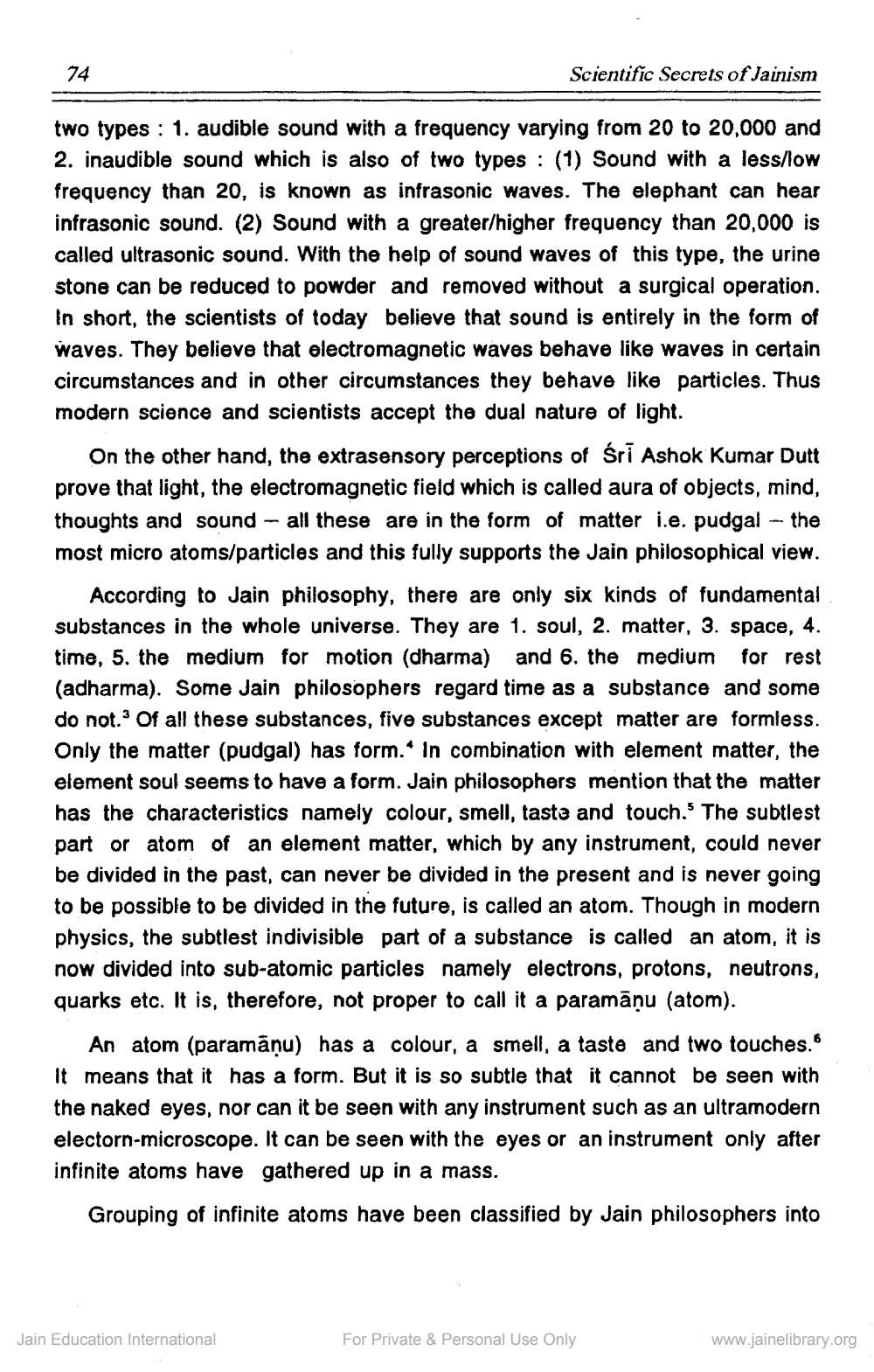________________
74
Scientific Secrets of Jainism
two types: 1. audible sound with a frequency varying from 20 to 20,000 and 2. inaudible sound which is also of two types (1) Sound with a less/low frequency than 20, is known as infrasonic waves. The elephant can hear infrasonic sound. (2) Sound with a greater/higher frequency than 20,000 is called ultrasonic sound. With the help of sound waves of this type, the urine stone can be reduced to powder and removed without a surgical operation. In short, the scientists of today believe that sound is entirely in the form of waves. They believe that electromagnetic waves behave like waves in certain circumstances and in other circumstances they behave like particles. Thus modern science and scientists accept the dual nature of light.
On the other hand, the extrasensory perceptions of Śri Ashok Kumar Dutt prove that light, the electromagnetic field which is called aura of objects, mind, thoughts and sound - all these are in the form of matter i.e. pudgal - the most micro atoms/particles and this fully supports the Jain philosophical view.
According to Jain philosophy, there are only six kinds of fundamental substances in the whole universe. They are 1. soul, 2. matter, 3. space, 4. time, 5. the medium for motion (dharma) and 6. the medium for rest (adharma). Some Jain philosophers regard time as a substance and some do not. Of all these substances, five substances except matter are formless. Only the matter (pudgal) has form. In combination with element matter, the element soul seems to have a form. Jain philosophers mention that the matter has the characteristics namely colour, smell, taste and touch. The subtlest part or atom of an element matter, which by any instrument, could never be divided in the past, can never be divided in the present and is never going to be possible to be divided in the future, is called an atom. Though in modern physics, the subtlest indivisible part of a substance is called an atom, it is now divided into sub-atomic particles namely electrons, protons, neutrons, quarks etc. It is, therefore, not proper to call it a paramāņu (atom).
An atom (paramāņu) has a colour, a smell, a taste and two touches." It means that it has a form. But it is so subtle that it cannot be seen with the naked eyes, nor can it be seen with any instrument such as an ultramodern electorn-microscope. It can be seen with the eyes or an instrument only after infinite atoms have gathered up in a mass.
Grouping of infinite atoms have been classified by Jain philosophers into
Jain Education International
For Private & Personal Use Only
www.jainelibrary.org




